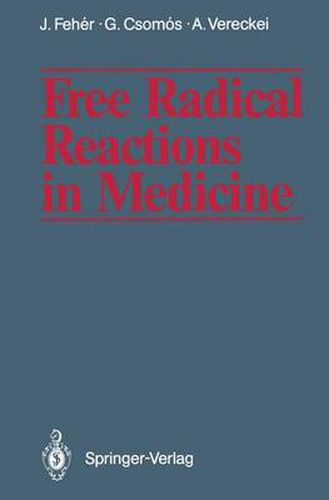Readings Newsletter
Become a Readings Member to make your shopping experience even easier.
Sign in or sign up for free!
You’re not far away from qualifying for FREE standard shipping within Australia
You’ve qualified for FREE standard shipping within Australia
The cart is loading…






This title is printed to order. This book may have been self-published. If so, we cannot guarantee the quality of the content. In the main most books will have gone through the editing process however some may not. We therefore suggest that you be aware of this before ordering this book. If in doubt check either the author or publisher’s details as we are unable to accept any returns unless they are faulty. Please contact us if you have any questions.
Basic research has thrown new light on the importance of free radicals in biol- ogy and medicine. The clarification of interactions opens numerous physio- logical and pathological processes to closer scrutiny. The pathophysiological processes are now understood, even though the basic mechanisms of free radi- cal reaction have as yet escaped full explanation. Asystematic approach makes it possible to re-evaluate and contrast the in- dications, reactions, and prospects for success. The extracellular significance of oxygen radicals in inflammatory condi- tions and their role in the destruction of bacteria in the phagosome of granu- locytes were primary factors intensifying research. Nature also provides a great number of examples which demonstrate that through the emergence of free radicals highly toxic combinations can form from innocuous substances. The reverse principle may also be encountered. Taking into account free radical reactions in pathomorphological investi- gations helps prepare the ground for causal therapy. Research into these phen- omena will contribute to a better understanding of physiological and patho- physiological processes. Many questions still remain unanswered, and it will take several years of research before the final stone is unturned.
$9.00 standard shipping within Australia
FREE standard shipping within Australia for orders over $100.00
Express & International shipping calculated at checkout
This title is printed to order. This book may have been self-published. If so, we cannot guarantee the quality of the content. In the main most books will have gone through the editing process however some may not. We therefore suggest that you be aware of this before ordering this book. If in doubt check either the author or publisher’s details as we are unable to accept any returns unless they are faulty. Please contact us if you have any questions.
Basic research has thrown new light on the importance of free radicals in biol- ogy and medicine. The clarification of interactions opens numerous physio- logical and pathological processes to closer scrutiny. The pathophysiological processes are now understood, even though the basic mechanisms of free radi- cal reaction have as yet escaped full explanation. Asystematic approach makes it possible to re-evaluate and contrast the in- dications, reactions, and prospects for success. The extracellular significance of oxygen radicals in inflammatory condi- tions and their role in the destruction of bacteria in the phagosome of granu- locytes were primary factors intensifying research. Nature also provides a great number of examples which demonstrate that through the emergence of free radicals highly toxic combinations can form from innocuous substances. The reverse principle may also be encountered. Taking into account free radical reactions in pathomorphological investi- gations helps prepare the ground for causal therapy. Research into these phen- omena will contribute to a better understanding of physiological and patho- physiological processes. Many questions still remain unanswered, and it will take several years of research before the final stone is unturned.